
Researchers at the Institute of Modern Physics and collaborators have discovered two new isotopes, osmium-160 and tungsten-156, revealing potential for lead-164 to be a stable, doubly magic nucleus. This breakthrough enhances the understanding of nuclear stability and challenges traditional views on magic numbers, indicating a significant step forward in nuclear physics.
Scientists at the Institute of Modern Physics (IMP) under the Chinese Academy of Sciences (CAS), along with their collaborators, have created two novel isotopes—osmium-160 and tungsten-156. This discovery provides new insights into the architecture of atomic nuclei and suggests that lead-164 might possess enhanced stability as a potentially doubly magic nucleus.
The study was published in Physical Review Letters and highlighted as an Editors’ Suggestion.
“Magic numbers” of protons and neutrons can make an atomic nucleus particularly stable. The traditional magic numbers are 8, 20, 28, 50, 82 and 126. In previous studies, researchers discovered the vanishing of traditional magic numbers and the emergence of new magic numbers on the neutron-rich side of the nuclide chart.
Will other traditional magic numbers disappear in extremely neutron-deficient nuclear regions? Further exploration is of great significance to enrich and develop nuclear theories and to deepen our understanding of nuclear forces.
Experimental Achievements and Findings
In this study, researchers carried out the experiment at the gas-filled recoil separator-Spectrometer for Heavy Atoms and Nuclear Structure (SHANS), which is located at the Heavy Ion Research Facility in Lanzhou, China.
Using the fusion evaporation reaction, researchers synthesized osmium-160 and tungsten-156 for the first time. They measured the α-particle energy and the half-life of osmium-160, which is an α-emitting isotope. Meanwhile, they determined that the daughter nucleus, tungsten-156, is a β+ emitter with a half-life of 291 ms.
With the newly measured α-decay data, researchers derived the α-decay reduced width for osmium-160 and compared it with other nuclei with 84 neutrons but fewer protons. They found a surprising trend: The higher the proton number, the lower the decay rate.
Implications for Nuclear Theory and Stability
“This trend is interpreted as evidence for the strengthening of 82-neutron shell closure towards the proton drip line, which is supported by the increase of the neutron-shell gaps predicted in theoretical models,” said Dr. Yang Huabin from IMP, the first author of the paper.
Moreover, researchers suggested that the enhanced stability of 82-neutron shell closure can be attributed to the increasing closeness to the doubly magic nucleus lead-164, which might be a stable nucleus with 82 protons and 82 neutrons. Although lead-164 is predicted beyond the proton-drip line, the enhanced shell effect has the potential to make it a bound or quasi-bound nucleus.
Reference: “Discovery of New Isotopes 160Os and 156W: Revealing Enhanced Stability of the N=82 Shell Closure on the Neutron-Deficient Side” by 15 February 2024, Physical Review Letters.
DOI: 10.1103/PhysRevLett.132.072502
The study was conducted in collaboration with the University of Chinese Academy of Sciences, the Advanced Energy Science and Technology Guangdong Laboratory, Shandong University, Sun Yat-sen University, Guangxi Normal University, Tongji University, and the Institute of Theoretical Physics of CAS.

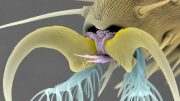


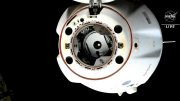
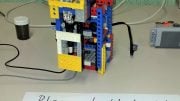

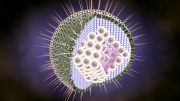
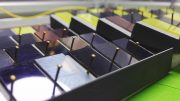
The information about the existence of space-time motion has always been in the interaction of topological vortex gravitational fields. Just as steel bars and cement can be used to build tall buildings and bridges, the information that exists between them lies in the interaction between steel bars and cement. The same goes for isotopes.
The branch of mathematics known as topology has become a cornerstone of modern physics. The perpetually swirling topological vortices defy traditional physics’ expectations. A physical properties of topological vortices is their to spontaneously begin to change periodically in time, even though the system does not experience corresponding periodic interference. Therefore, in the interaction of topological vortices, time is both absolute and relative,and physics often requires treating space and time at the same level.
Low-dimensional spacetime matter is the foundation of high-dimensional spacetime matter. Low-dimensional spacetime matter (such as topological vortex) can form new material structures and derive more complex physical properties via interactions and self-organization. It is extremely wrong and irresponsible to imagine low dimensional spacetime matter using high-dimensional spacetime matter.
Science must follow mathematical rules. For example, the Standard Model (SM) is considered to be one of the most significant achievements of physics in the 20th century. However, the magnetic moment of μ particle is larger than expected, revealed by a g-2 experiment at Fermilab, suggests that the established theory (such as SM) of fundamental particles is incomplete. Furthermore, the SM omitting gravitation, it not involved the time problem and when the particle movement starts. Mathematics is the foundation of science. Physics must respect the scientific nature of mathematics and mathematical models. The SM must be based on mathematical models in order to be scientific, convincing, and in line with natural laws.
I hope researchers are not fooled by the pseudoscientific theories of the Physical Review Letters (PRL), and hope more people dare to stand up and fight against rampant pseudoscience.
The so-called academic journals (such as Physical Review Letters, Nature, Science, etc.) firmly believe that two high-dimensional spacetime objects (such as two sets of cobalt-60) rotating in opposite directions can be transformed into two objects that mirror each other, is a typical case of pseudoscience rampant.
If researchers are really interested in Science and Physics, you can browse https://zhuanlan.zhihu.com/p/643404671 and https://zhuanlan.zhihu.com/p/595280873.
A interest of science is how to scale the difference of standard to quantum as equal building processes. The rules don’t match, at defined spots do the rules change 0r do the rules change in a smooth adjusting fashion to compensate for size. A caricature signature of change.I do think of the fracinaliving of electrons in stacked layers of graphene when needing to know how to bake the cake.
Are these findings gonna initiate the next investment bubble?